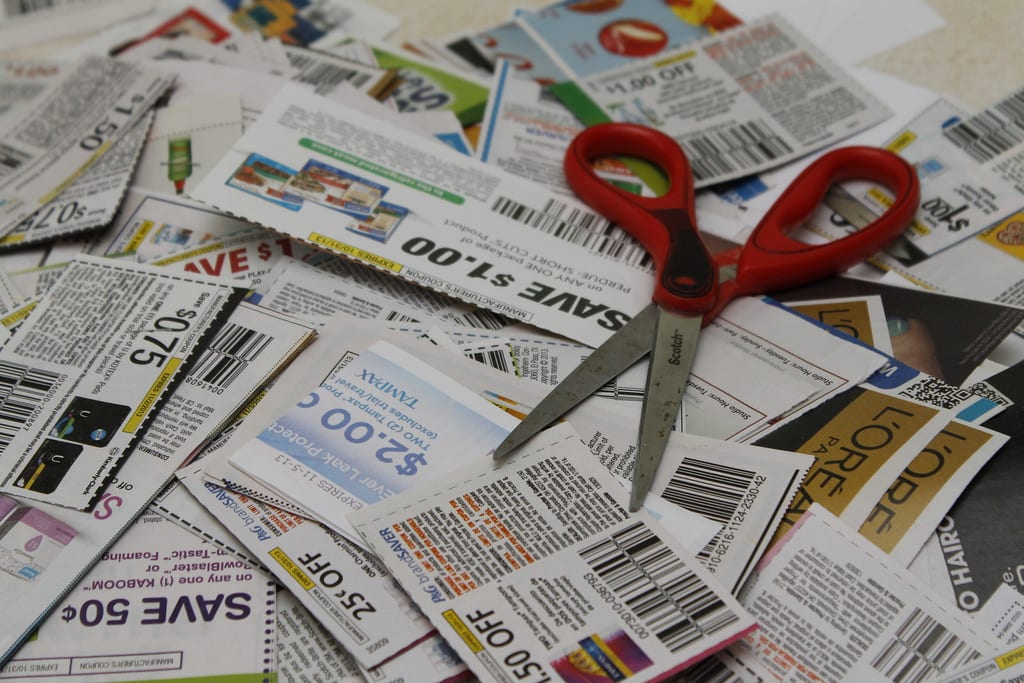Not-So-Extreme Couponing
How to make a tight budget work at the checkout.

You’ve probably seen it before - the women (and some men) on TLC’s Extreme Couponing, spending hours tirelessly collecting coupons and planning shopping trips in order to purchase a $1000 haul of grocery and toiletry items for under $30. It seems a little insane to many, but, they’re on to something.
Outside of the US, extreme couponing seems to be much harder to pull off, but, thanks to the internet, there’s plenty of resources for everyday, non-superhuman couponers and budgeters to save a few extra dollars here and there every time they shop.
Price Matching
A lot of retailers, such as Walmart, Target, Lowe’s, Best Buy, Toys R Us (sorry Americans, us Canucks still have this one!) offer something called a “price match guarantee” - in most cases, this means that if a competitor is offering the same product at a lower price, if you provide proof (as in a flyer, or pulling the item up online) in-store, they’ll honour the competitor’s price. Each store’s policy is different, but this is an easy way to save a little here and there each time you shop.
To find a store’s price match guarantee, or to find out if a store offers a price match program, call your local retailer, or check their website.
Scanning Code of Practice
While I’m admittedly unsure if this is in place outside of Canada (again, sorry rest of the world!)- the Scanning Code of Practice is another way that you can save money when you’re shopping.
The code, also known as the Scanner Price Accuracy Code is meant to ensure accurate pricing in terms of what’s on the store shelf, versus what comes up when the item is scanned at the till. If the price that comes up when the item is scanned is more expensive, and the item is originally priced at anything under $10, the item becomes free. If it exceeds $10, then the retailer takes the price down by $10.
An example of this would be if you’re shopping at Walmart and purchase a lamp. The shelf price is listed at $25. When you reach the register to pay for your lamp, it scans at $39.97. This is where the code comes in - your lamp becomes $15 - down to $25 for the correct price, and the further $10 as directed in the code.
A lot of retailers don’t actively enforce this though, but if you’re shopping at a store participating in the code, then be sure to keep a close eye on the register and bring any discrepancies to the cashier’s attention.
You can find the code here.
Online Coupon Sites
Websites such as Save.ca, SmartSource and CoolSavings are designed specifically for couponing. Users can scroll through various manufacturer coupons, and then print their selected coupons, in order to use them in-store. Many of these sites have limits on the quantity of coupons you can print, but, with a lot of sites providing the same or similar coupons, there’s definitely ways to get around that.
Sometimes manufacturer sites offer coupons for their products as well. The biggest one I can think of is Procter and Gamble - they have monthly releases of coupons for consumers to use on a variety of their products. Procter and Gamble owns everything from Tide, Bounce, Downy, Always, Olay, Febreze, Old Spice, Gilette, Head and Shoulders and Charmin, so there’s plenty of offers to choose from when looking through their coupon collection.
Other sites such as Honey and eBates also help you save while shopping online - which is a huge help. Honey searches for all the possible promo codes and deals available on the items in your shopping cart, while eBates rewards you for your online purchases with a small percentage of cash back per purchase.
Tearpads
A tearpad, for those who aren’t familiar with couponing lingo, are those awesome stacks of coupons you find in grocery stores, where you can tear off as many “Save $0.50” coupons as you’d like. They often appear infrequently, but if they are available, they often appear in the entrance of the store, or on the shelf next to the advertised product.
Rewards Programs
Almost every retailer nowadays has some form of rewards program for consumers to earn money as they shop. Whether it’s a point for every dollar spent, or a percentage off each time you present your card, signing up for rewards programs is never a bad idea. While carrying all those cards can be a pain, most companies now offer apps to store the card information on your mobile device to save yourself some space in your wallet.
Using resources like P&G Everyday, rewards programs and price matching helped me extend my grocery budget as much as possible during my college years, and I still practice it to this day.
Whether you’re paying off student loans, recently laid-off, a stay-at-home parent, or a college student who’s trying to make that student loan stretch as far as possible, who can say no to saving a little cash here and there?
About the Creator
Haley Alannah
journalism grad with a passion for beauty, mental health awareness, and hockey.
Enjoyed the story? Support the Creator.
Subscribe for free to receive all their stories in your feed. You could also pledge your support or give them a one-off tip, letting them know you appreciate their work.






Comments
There are no comments for this story
Be the first to respond and start the conversation.